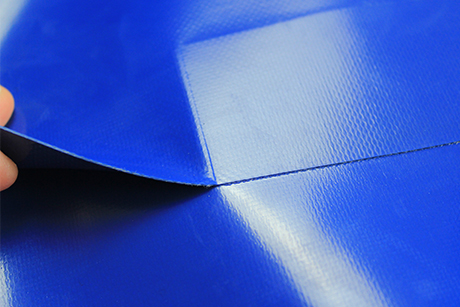Tarps News Categories

Most of the PVC fabric is surface treated on the main coating (PVC) to reinforce the shortcomings of PVC, mainly to extend the service life and strengthen self-cleaning (can be cleaned quickly or easily washed by rain). The surface treatment methods include coating and laminating. Depending on the characteristics of the surface treatment and the required thickness, spray painting can also be used, but if a thicker surface coating is required, it needs to be processed by knife coating or laminating. The thickness of the surface treatment directly affects the PVC fabric. Surface treatment can protect the surface of PVC and eliminate the damage of air pollutants, ultraviolet rays, wind and other weather factors, but after long-term use, it may be separated from the surface of PVC due to deterioration. In addition, toughening agent has been added into PVC to be full of elasticity and flexibility, and surface treatment can reduce the escape of toughening agent, so the speed of embrittlement, foaming and delamination is greatly slowed down. The surface treatments that are often used at present include acrylic, PVDF, etc., which will be introduced in detail below:

1. Acrylic surface treatment
Acrylic is the most economical and widely used surface treatment agent. Acrylic solution can be sprayed on the surface of PVC to give it a transparent gloss and good barrier to ultraviolet rays. At the same time, because the thickness of the spray is very thin, it has the characteristics of easy installation and maintenance. If the climate and air quality around the building are good, then the acrylic surface coating fabric can have a service life of about 10 years. The objects used are mainly tents, truck side curtains, concerts and warehouses.
2. Surface treatment of PVDF
PVDF( Polyvinylidene fluoride ) is an excellent engineering plastic with many unique mechanical properties and physical properties. It also has excellent passivity to strong acids, organic solutions, aromatics, solvents, halogens and alcohols. The composition of PVDF is 59% fluorine, 38% carbon and 3% hydrogen. There is a strong bond energy between carbon and fluorine. It is difficult for ultraviolet rays to destroy this bond, so PVDF has excellent UV resistance. It can also prevent chemical damage.The composition of PVDF is 59% fluorine, 38% carbon and 3% hydrogen. There is a strong bond energy between carbon and fluorine. It is difficult for ultraviolet rays to destroy this bond, so PVDF has excellent UV resistance. It can also prevent chemical damage. These characteristics are far from acrylic. Judging from the exposure experiment, after a long time of experimentation, PVDF has only minimal changes in color and brightness, which is also impossible for acrylic. Coupled with excellent self-cleaning effect, the maintenance cost of PVDF is also relatively low. If the environment is compatible, the various excellent characteristics of the above-mentioned PVDF will make it have a service life of 15-20 years, but it is also as convenient as acrylic when installed. It can be said that it combines the advantages of various materials, and with the help of PVDF, the various disadvantages of PVC has been considerably overcome.
However, there are also some difficulties. Because PVDF is chemically attached to the surface of PVC, there is not much change in color. Usually only white can be selected, even if there are a few other colors to choose, because only a few manufacturers will make it, therefore, the price will be relatively increased a lot. Another disadvantage is that because PVDF has excellent protection against chemicals, when welding, it is necessary to grind the PVDF on the PVC to smoothly join the work, which increases the production cost. When performing PVDF grinding work, the grinding depth and width must be accurately controlled, otherwise welding will seriously affect the strength. For workers who need to manually polish PVDF with sandpaper on site, this is an even more difficult task.
3. PVDF/PVC surface treatment
For cost considerations, it is also possible to dilute PVDF with PVC for surface treatment, so that the processing and installation of the fabric will save a lot of costs, because the fabric does not need to be repaid like pure PVDF-treated PVC fabric that can only be carried out after the surface PVDF is removed when welding, which saves a lot of processes. The diluted PVDF obtains a competitive advantage in cost, but the obvious disadvantage is that the life of the fabric will be reduced from 15 to 20 years to 10 to 15 years. However, the color can be changed more than pure PVDF processed fabric, but only a few manufacturers can process it.
you may also like
- Custom made 28 ft x 24 ft Vinyl Lumber Tarp for Step deck or Drop Deck Trailer 10' Drop
- Clear Tarp PVC Vinyl Transparent Plastic Fabric
- PVC Clear Vinyl Tarps PVC Transparent Tarpaulin
- Hot Sale PVC Coated OEM Mesh Tarp With Grommets
- 24' X 28' (8' Drop & Flap) Lightweight Flatbed Trailer Lumber Tarp - 14 Oz. Black Tarp
- 10 Oz Black Mesh Tarp Fabric Rolls Vinyl Woven Pvc Coated Polyester Mesh Fabric
- 6' x 6' Glass PVC Vinyl 20 MIL - Fire Retardant Clear Vinyl
- 22 oz Heavy Duty Tarp Kit Fits all standard Open Top Containers
- 24' X 28' (8' Drop & Flap) Heavy Duty Flatbed Trailer Lumber Tarp - 18 Oz. Black Tarp
- High Quality PVC Coated Polyester Fabric for Truck PVC Coated Mesh Tarp Net Tarp
others also viewed
- canopy room has many advantages
- PVC Tarp - Why Are Plastic Tarps Blue?
- What Is Considered A Heavy Duty Tarp?
- Instructions for using tarpaulin
- How to buy Heavy Duty PVC Tarpaulins
- Commonly used tarp sizes
- What Are Mesh Tarps Used For? Do It Block The Wind?
- Flame retardant mechanism of pvc tarps
- What are the types of Textilene mesh
- Performance indicators to be considered for the tarpaulin used to build a fast storage tent